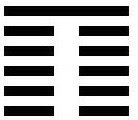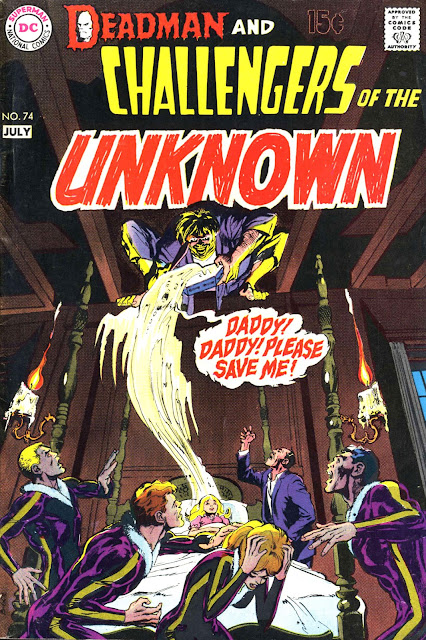SUPERMAN #233 Jan 1971
'Kryptonite Nevermore!' reads the caption, Neal Adams' dynamic cover-image depicting the eponymous hero bursting symbolically free of chains made from the incapacitating green substance as easily as if they were made of paper--
For SUPERMAN #233, dated January 1971, Denny O'Neil was drafted in to take over writing duties on this title, alongside artists Curt Swan and Murph Anderson. As he'd done roughly a year earlier on GREEN LANTERN, the writer's mission was to shake up the long-established character, and this time he delivers the double whammy (spoiler alert!) of removing the threat of kryptonite from the world, and of gradually stripping away Superman's powers. And as he'd done with the opening splash page of GREEN LANTERN, O'Neil kicked this run of stories off with a forthright full-page also filled with teasing promises raising all kinds of questions about what readers would have in store for them--
The narrative that follows begins with a scientist's attempts to harness the potential of kryptonite as a cheap energy source. Of course it fails--
The mishap appears not only to transform all the world's kryptonite into iron but also results in the creation of something rather mysterious-- When the experiment ends in a violent explosion, it blasts our hero into a state of seeming lifelessness.
As he is helped to his feet we see more of this imprint, the artists have clearly been charged with making sure of its prominence in the frame, and sure enough, its significance will come later--
In addition, to emphasise that this issue is an issue of change Clark Kent becomes a TV reporter, his new boss Morgan Edge re-assigning him to the role--
Covering a rocket-launch our hero has to save the day by foiling an attempt to steal the rocket, but in the process discovers one of his super-powers, his heat-vision, is ineffective--
Then as he flies over the part of the desert where he fell previously, leaving the impression in the sand, he finds himself "dizzy" and "exhausted", drained of strength "even worse than the effects of kryptonite"--
And that prominently drawn impression in the desert sand is sighted once again, this time made even more obvious in the foreground of the frame, with its outstretched right hand pointing towards the mountain--
And then the story ends with a brief epilogue delivering these curious frames-- The captions read 'A blazing sun beats upon the desert... upon a figure in the sand.. and then it stirs... ever so slowly...' --
O'Neil seems to be invoking the words of W.B. Yeats, who, in his poem THE SECOND COMING, wrote-- "somewhere in sands of the desert A shape with lion body and the head of a man, A gaze blank and pitiless as the sun Is moving its slow thighs"--
Then, as the figure rises from the sand we read, 'It is a thing created from soil and rock and a burst of raw energy... cast in the mold of Superman... and it LIVES!'--
Here we cannot avoid the Biblical associations of the above description, O'Neil clearly influenced by the way the creation of Adam is described in GENESIS-- "And the LORD God formed man of the dust of the ground, and breathed into his nostrils the breath of life; and man became a living soul."
But what follows suggests this creation to be something very different-- 'Like some nightmare creature, it plods toward the distant mountains... and towards the villages and towns and cities beyond... moving slowly, relentlessly to a terrible destiny...'
Again O'Neil's words align with Yeats' THE SECOND COMING which closes with these lines-- "And what rough beast, its hour come round at last, Slouches towards Bethlehem to be born?"
While it is unlikely that the vast majority of readers of SUPERMAN #233 would have been aware of the existence of Yeats' work, maybe there were a few reading it in the uncertain world of 1971 who were prompted to think of the poem. And maybe they dug out a copy from their bookshelf or their library and re-read the poem, itself a description of a world facing apocalyptic destruction-- written shortly after the end of the First World War in the midst of the Spanish Flu pandemic. And if so, reading the following words from the poem might have made them wonder what was in store for them in the pages of 'The Amazing NEW Adventures of SUPERMAN'--
Things fall apart; the centre cannot hold;
Mere anarchy is loosed upon the world,
The blood-dimmed tide is loosed, and everywhere
The ceremony of innocence is drowned;
The best lack all conviction, while the worst
Are full of passionate intensity.
One final word on that famous phrase 'Things fall apart'-- the phrase itself is one that Yeats himself borrowed from the I Ching, corresponding to Hexagram 23-- Five yin lines with one Yang line on top of them--
The various meanings and interpretations of this are countless, of course, as many as the meanings and interpretations of the Bible or the poetry of a writer like W.B. Yeats. But what we can be sure of is that the symbol is made up of two separate symbols, the first meaning Mountain, the second Earth--
So placed together as the Hexagram they make an image which represents a mountain rising up from the earth. That this is an image which occurs several times in SUPERMAN #233, then, is surely no accident--

































Fascinating exegesis of the "Epilogue", Andrew!
ReplyDeleteThankyou-- I've no idea if the Yeats comparison has been made before, but it just seemed to make sense to me--
Delete